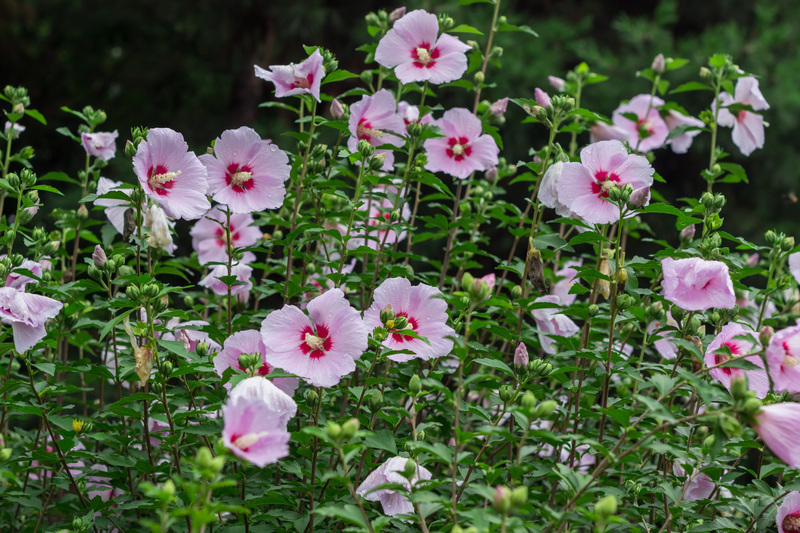The Beginner's Guide to Revamping an Abandoned Garden
Posted on 26/06/2025
The Beginner's Guide to Revamping an Abandoned Garden
Reviving an abandoned garden can be an immensely rewarding project for any beginner. Whether you have recently moved into a new home or inherited a neglected backyard, transforming an overgrown space into a thriving, green haven may seem daunting at first. However, with the right guidance, patience, and a bit of enthusiasm, anyone can breathe new life into an abandoned garden. In this comprehensive guide, we will outline the essential steps and expert tips to help you successfully renovate a neglected garden and cultivate an outdoor paradise.

Why Should You Restore an Abandoned Garden?
Before we embark on the journey of revamping an abandoned garden, it's important to understand the numerous benefits of garden restoration:
- Enhanced Property Value: A beautifully restored garden significantly increases your property's appeal.
- Ecological Impact: Revitalizing a neglected garden supports local biodiversity by attracting birds, bees, and butterflies.
- Physical and Mental Health Benefits: Gardening is great exercise and reduces stress, enhancing overall well-being.
- Personal Satisfaction: Watching an abandoned plot flourish due to your efforts is incredibly rewarding.
Preparatory Steps in Revamping an Abandoned Garden
Assessing the Garden's Current State
Start by surveying your abandoned garden. This will help you understand what you're working with and develop a realistic action plan. Take note of:
- The size and layout of the space
- The types and health of existing plants
- Areas overgrown with weeds or invasive shrubs
- Structural elements like sheds, fences, paths, and patios
- Potential hazards (broken glass, sharp objects, or hidden debris)
Gathering Essential Tools
To effectively revive a neglected garden, you'll need basic gardening tools. Invest in:
- Gardening gloves (to protect hands from thorns and stings)
- Pruning shears and loppers
- A sturdy spade and trowel
- Rake and hoe
- Wheelbarrow for moving debris
- Watering can or hose
- Compost bin or bags for waste disposal
Step-By-Step Guide to Transforming a Neglected Garden
1. Clear Out the Debris
A revitalized garden always starts with a thorough clean-up. Remove any rubbish, broken pots, old furniture, and excess leaves. Be mindful to wear gloves and use tools for safe handling. This step will provide a blank canvas and allow you to envision your future garden design.
- Dispose of obvious trash and hazards first
- Cut back overgrown grass, weeds, and brambles
- Trim dead branches and prune unruly shrubs
2. Weed and Aerate the Soil
Weeds are often rampant in neglected gardens. To restore an abandoned garden, you'll need to control invasive growth:
- Hand-pulling: The most effective method for large weeds with visible roots.
- Hoeing: Fast for wide borders, but make sure to collect weed remains.
- Soil Aeration: Break up compacted, dry soil using a fork or aerator. This improves drainage and root health.
*Tip: Avoid chemical weedkillers, especially if you plan to grow edible plants in your newly revamped garden.*
3. Repair and Restore Hardscape Elements
Next, evaluate and repair the hard elements of your garden:
- Fix or replace broken fences and gates.
- Clean and repair patios, stone paths, and decking.
- Check for rot in wooden sheds or borders.
Restoring these features not only enhances safety but establishes the framework for your rejuvenated backyard.
4. Revitalize the Soil
A critical step in revamping a neglected garden is improving soil health. Years of neglect may leave the soil depleted and compacted.
- Add Organic Matter: Incorporate compost, well-rotted manure, or leaf mold to boost nutrients.
- Mulching: Apply a layer of organic mulch to retain moisture and suppress weeds.
- Test pH: Consider a simple soil test kit for pH and adjust as needed with lime or sulfur.
*Healthy soil is the foundation for lush planting and successful garden restoration.*
5. Decide What to Keep, Remove, or Add
Examine the existing plants. Mature trees and established shrubs can be assets if they are in good health. Decide on:
- What to save: Trees, roses, sturdy perennials, or wildflowers
- What to remove: Diseased, stunted, or invasive species
- What to add: Seasonal color, edible plants, or new flowerbeds
*Tip: Sometimes, a well-pruned neglected shrub can become the highlight of your revamped garden!*
6. Plan Your New Design
Now it's time to unleash creativity. Draw up a simple plan or sketch of how you would like your restored garden to look.
- Decide on focal points (pond, seating area, arbor, etc.)
- Zone your garden: kitchen garden, flower beds, play area, relaxation space
- Consider sun and shade patterns throughout the day
- Select a style: cottage garden, wildlife-friendly, formal, or modern
*Remember, your revamped backyard should reflect your personal taste and lifestyle needs.*
7. Start Planting and Landscaping
With a solid plan in place and your garden cleared and prepped, it's time to start planting anew:
- Select easy-care, resilient plants suitable for beginners, such as lavender, marigolds, or hardy geraniums.
- Group plants by water and sunlight needs.
- Install new borders, raised beds, or containers as desired.
- Lawn repair: Re-seed patchy areas, or lay new turf if needed.
*Focus on quick wins for instant improvement, such as potted flowers or a small vegetable patch.*
8. Promote Wildlife and Sustainability
One of the joys of reviving an abandoned garden is the chance to support local wildlife and eco-friendly practices. Here's how:
- Select pollinator-friendly flowers and native plants.
- Add bird feeders, insect hotels, or a small pond.
- Reduce chemical use; opt for organic fertilisers.
- Home compost scraps and grass clippings to reduce waste.
*Creating a sustainable restored garden keeps your outdoor space vibrant and healthy for years to come.*
Essential Maintenance Tips for a Rejuvenated Garden
Set a Routine
Regular maintenance is key to preserving your hard work:
- Weekly weeding and watering
- Monthly fertilizing during the growing season
- Pruning shrubs and trees as needed
- Seasonal replanting for continuous color
*Consistent upkeep ensures your renovated garden remains beautiful and healthy.*
Monitor for Pests and Diseases
Keep an eye out for common garden troubles such as aphids, snails, slugs, or fungal infections. Opt for eco-friendly control methods like hand-picking pests, introducing ladybugs, or applying homemade sprays.
Embrace Organic Solutions
Whenever possible, use natural fertilizers, homemade compost, and organic pesticides. This not only protects the environment but also maintains soil and plant health.
Budget-Friendly Tips for Beginners
Restoring an abandoned garden doesn't have to break the bank. Here are some cost-effective ideas:
- Propagate existing plants from cuttings and seeds.
- Re-use and upcycle materials for borders or trellises.
- Join local plant swaps and community gardening groups.
- Start small! Focus on one bed or area at a time.
*With some imagination, you can achieve a beautiful garden makeover without overspending.*
Common Challenges When Revamping a Neglected Garden
- Hard, Compacted Soil: Persistent cultivation and adding organic matter will gradually improve texture.
- Persistent Weeds: Mulch heavily and stay consistent with removal; some weeds take several seasons to control.
- Poor Drainage: Amend clay soil with grit and build raised beds as needed.
- Shade from Mature Trees: Choose shade-tolerant plants and prune lightly to improve light penetration.

Transforming an Overgrown Garden: Real-Life Success Stories
Need inspiration? Many beginner gardeners have turned seemingly hopeless spaces into vibrant, flourishing gardens. Seek out gardening blogs for before-and-after photos, or join online forums for advice and encouragement.
Success comes in small steps: often, a single season shows significant progress, motivating you to keep going.
Conclusion: Your Garden Transformation Awaits
Bringing back beauty and life to an abandoned garden is an attainable goal for any beginner. By following the steps outlined in this guide to revamping a neglected garden, you'll establish a foundation for lasting gardening success. Remember, patience and consistency are key--each session in your garden makes a difference.
So, gather your tools, roll up your sleeves, and embark on your journey to revamp an abandoned garden. In time, you'll be rewarded with blooms, vegetables, wildlife, and the satisfaction of creating a unique outdoor retreat.
Quick Recap: Steps to Restore an Abandoned Garden
- Assess the garden and gather tools
- Clear out debris and weed thoroughly
- Repair hardscape and revitalize soil
- Create a simple design plan
- Plant wisely and focus on sustainability
- Maintain regularly for ongoing success
With determination and creativity, your neglected garden can become a blooming, welcoming space for years to come. Happy gardening!

